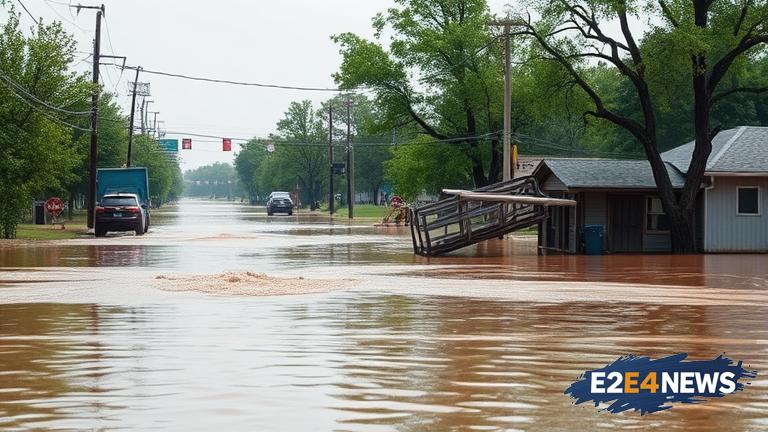A thorough examination of Texas’ flood disaster plan has raised questions about its effectiveness in preventing loss of life and property. The plan, which relies heavily on sirens to alert residents of impending floods, has been criticized for being outdated and inadequate. With the state’s rapid urbanization and increasing frequency of extreme weather events, experts warn that the current plan may not be enough to mitigate the risks associated with flooding. In fact, a recent investigation found that many residents in flood-prone areas are not even aware of the sirens or do not take them seriously, highlighting the need for a more comprehensive approach. The investigation also revealed that the state’s emergency management officials are often overwhelmed during floods, making it difficult for them to respond effectively. Furthermore, the plan’s reliance on sirens has been criticized for being insufficient, as many residents may not be able to hear them or may not have access to them. In addition, the plan does not take into account the needs of vulnerable populations, such as the elderly and those with disabilities. The investigation also found that the state’s flood mapping and forecasting systems are not always accurate, making it difficult for officials to predict and prepare for floods. Moreover, the plan does not provide adequate funding for flood mitigation and prevention measures, such as the construction of flood-control infrastructure and the implementation of flood-resistant building codes. The state’s lack of investment in flood prevention has been criticized for being short-sighted, as it can lead to more costly and devastating floods in the long run. In recent years, Texas has experienced some of the most devastating floods in its history, resulting in billions of dollars in damages and loss of life. The aftermath of these floods has highlighted the need for a more comprehensive and proactive approach to flood disaster planning. Experts recommend that the state adopt a more holistic approach that takes into account the social, economic, and environmental factors that contribute to flooding. This could include measures such as wetland restoration, floodplain management, and the implementation of green infrastructure. Additionally, the state should invest in more advanced flood forecasting and warning systems, such as those that use artificial intelligence and machine learning to predict flood events. The state should also prioritize the needs of vulnerable populations and ensure that they have access to adequate resources and support during floods. Furthermore, the state should provide more funding for flood mitigation and prevention measures, such as the construction of flood-control infrastructure and the implementation of flood-resistant building codes. The investigation’s findings have sparked concerns about the state’s preparedness for future floods, and officials are under pressure to revamp the flood disaster plan. In response, the state has announced plans to review and update its flood disaster plan, including the implementation of new flood forecasting and warning systems. However, experts warn that the state must take a more proactive and comprehensive approach to flood disaster planning in order to truly mitigate the risks associated with flooding. The state’s failure to do so could have devastating consequences, including loss of life, property damage, and economic disruption. As the state moves forward with its plan to update its flood disaster plan, it is essential that officials prioritize the needs of its citizens and take a proactive approach to mitigating the risks associated with flooding. By doing so, the state can reduce the risk of devastating floods and create a safer and more resilient community for all. The investigation’s findings serve as a wake-up call for the state to take immediate action to address its flood disaster plan and ensure that it is equipped to handle the challenges posed by extreme weather events. Ultimately, the state’s ability to respond to and mitigate the effects of flooding will depend on its willingness to invest in a comprehensive and proactive approach to flood disaster planning.





